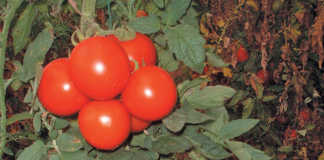I’ve just returned from a visit to South Africa’s newest fresh produce market. Its location contradicts everything I’ve always said about a successful market. The evidence is overwhelmingly in favour of a fresh produce market being located where the buyers are and not the farmers.
Yet the recently opened Mooketsi Market is in the middle of a production area, with no urban infrastructure around it. If you’ve been to Mooketsi, you’ll know what I mean. To all intents and purposes, there should not be a buyer in sight.
Simple, effective
The market was originally built as a roadside facility for the ‘bakkie trade’ and informal sector buyers looking for tomatoes from the giant ZZ2 farming enterprise. It worked on a simple system. All buyers had to do was transfer the tomatoes from ZZ2’s plastic lugs into their containers. As business grew, onions, avocados and mangoes were added to the mix, and ZZ2 eventually set up four similar facilities in Limpopo.
Opened on 1 March, the Mooketsi Market is the 24th fresh produce market in the country, and the smallest. Despite this, it has all the necessary infrastructure and legal requirements necessary to operate as a market. It also supports the ZZ2 marketing philosophy of using the agency system and creating a platform for price determination.
I’m told that buyers come from as far away as Botswana and even Mozambique, and the market agent is actively seeking to increase the range according to customers’ requirements. Apparently, I was there on a relatively quiet day, but the place was buzzing. Bakkies from further away often arrive the night before and the drivers sleep over to catch the market early.
Private initiative
I could not help but think of the numerous, well-intentioned efforts by provincial and other governmental structures that are continually talking about markets and planning to open them. South Africa’s newest market is a good example of what private initiative can do while the public sector continues to ‘investigate’.












